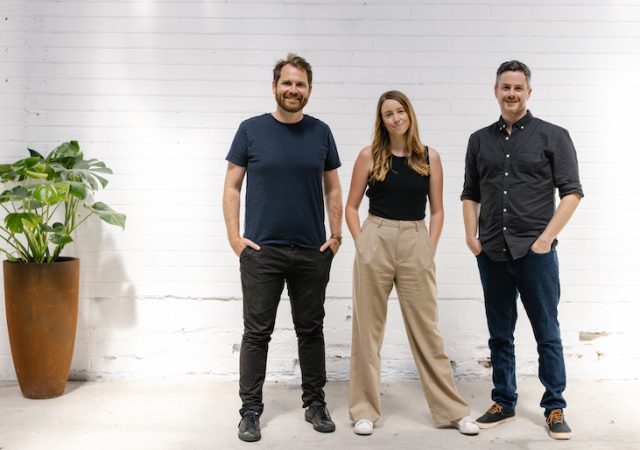Congratulations! You’ve launched your startup, survived the notorious “valley of death” for early stage funding between seed rounds and series A. Your venture is now on the road, with products in place and the revenue rolling in.
But perhaps, as you look to scale rapidly, your story is of growth (*waves at BNPL fintechs*), and the cash burn continues. There comes a time when you need a fresh capital injection from a series B round.
The cheque size is much bigger – typically between $10 and $20 million – with the company’s valuation climbing, and initial investors deciding if they want to double down on your idea. Perhaps a more complex deal needs to be stitched together from multiple investors.
So how do you land a successful series B?
We asked some of Australia’s leading VC investors about what milestones they expect to see in a startup and what advice they had for founders looking to take the next big step in capital raising.
Here’s what they said.
Dan Krasnostein
Partner, Square Peg Capital

Square Peg partner Dan Krasnostein
Square Peg is a global venture fund with investing teams in Australia, Israel and Singapore. We’re currently investing out of the $600 million we raised in 2020 and typically partner with founders very early in a company’s journey, often at the seed stage.
We prefer to lead rounds, and often invest in the same company time and again. In the past few years, we’ve invested in over 40 rounds at the A and B stage in companies including Airwallex, Zeller, Rokt and FinAccel.
I’m hesitant to give generic fundraising advice, as I know how important context is in giving good advice.
With that being said, and with Square Peg’s global perspective in mind, there are a few milestones founders can self-assess against when considering their readiness for investment.
At seed stage, an investment typically hinges on the hypothesis that the founding team and their vision is extraordinary. At the A stage I’d be looking for the beginnings of product market fit, and at the B stage I’d be assessing if there are signs that the team is building a scalable engine across all key functions: hiring, sales, product, development etc. You’ll note that none of these are metric-driven assessments. There is no magic revenue number to hit.
For Aidoc, an AI company that helps radiologists find critical abnormalities, the transition between series A and B was largely marked by maturation in their sales process. In particular, Aidoc transitioned from founder-led sales, to sales team-led sales, closing multiple tier 1 customers. But for every company, it’ll be unique.
It’s important for founders to understand that the distinction between rounds is blurring. We’re seeing greater variance in round size and valuation at all stages and across all geographies.
The single most important aspect of fundraising is to partner with investors who are aligned with your vision for your company and how you’ll get there. It’s important for you to prioritise relationships with investors who value your contribution as much as your company.
Ultimately, the best fundraising advice is never to run out of cash and to build a beautiful product or service that your customers love.
Rachel Yang
Partner, Giant Leap

Giant Leap Fund partner Rachel Young.
Giant Leap invests in early-stage founders, typically at the Seed or Series A stage.
We continue to support our portfolio companies and invest in them during Series B rounds and beyond. This is a key part of our strategy to help these companies continue to grow so something that we look at closely.
To date, we’ve supported a number of companies in making this leap, including FutureSuper, GlamCorner, Amber Electric, and Sendle, all of whom have also managed to scale their impact alongside their revenue growth.
For us, the difference between a company that’s ready for Series A and a company that’s ready Series B is a key shift in the focus of the business.
The Series A period is all about finding product-market fit — ensuring that your idea actually solves a problem for your customers and is commercially viable.
Series B is about solidifying that offering and shifting the focus to expansion. Ideally, by the time you reach this round, you should have a playbook in place as to how you are going to grow the business, and you are approaching investors with a proven strategy in mind.
Another way to look at it is the role of the founder.
In a Series A business, we’d expect the founder to be fairly ingrained in the management, sales, and promotion of the product. They need to be hands-on with most aspects.
However, with a Series B company, they should shift their focus to management and start to build out their executive team to help run the company. Still hands-on, but more helping to steer the business than being the driving force behind it.
In terms of what investors look for in a good Series B investment, it’s solid revenue numbers and a good track record of hiring talent after your Series A round. You need to provide more figures to investors with a Series B round.
They’ll want to understand more nuanced details like your churn, unit economics, and customer lifetime value. That’s simply because a investor wants to see strong foundations in the business to facilitate scale.
Finally, it’s worth noting that your Series A investors will be there to help with your — even if they aren’t directly investing.
They want to see you succeed and will coach you towards it. So have this chat early with them, understand what’s needed to help you build your next deck, and work towards it together.
Richard Lin
Investor, Airtree Ventures

Airtree Ventures investor Richard Lin Photo: Ryan Stuart
At AirTree, we’re focused on making our first investment into start-ups early, so the Series B is rarely the first time we invest in a start-up.
Instead, most of our Series B investments are in our portfolio companies, where there is already a long standing relationship. Also, just as no two startups are the same, no two journeys from Seed to Series B are the same.
So please take the following as general guidelines rather than hard and fast rules.
With those two caveats out of the way, there are generally three things we love to see in start-ups that are on the journey to raising a Series B:
Signs of a world-class organisation developing
Start-up investing often comes down to the team, and the Series B is no different. Whilst seed and Series A are all about the founders and early team, the Series B is about how prepared the company is at an organisational level for the next stage of growth.
Specifically, we like to see that the company is demonstrating success hiring world class talent – especially at the exec/VP level. Also, what’s just as important is that the organisation is providing an environment and culture that can successfully retain that talent.
Our Series B investment in A Cloud Guru is a great example. Prior to the round, the company managed to successfully recruit a COO, VP Sales, and SVP of Partnerships. Further, the founders – Sam & Ryan – were proactively thinking about culture from the earliest days.
Continued evidence of product-market fit
By Series B, a startup should be well and truly demonstrating product-market fit. What’s unique at the Series B stage is that there should be plenty of data to assess the level of product market fit from a quantitative perspective.
Some very rough rules of thumbs would be that revenues are doubling year on year with high retention (both gross and net).
A great example would be the second time we invested into LinkTree. At that time, the company was growing well ahead of forecasts, as well as demonstrating success selling into new segments of the market.
Early evidence of a scalable go to market engine
Series B rounds often reflect an opportunity to pour more fuel onto a start-ups go to market engine.
As a result, we often like to see early signs that companies are demonstrating success with a broader range of channels (e.g., content marketing, channel partnerships, outbound etc.) as well as sustainable unit economics (e.g., short CAC paybacks).
Justin Lipman
Partner, EVP

EVP partner Justin Lipman
Typically a Series B investor is looking for a proven “engine” that is ready to scale. They are looking for a go to market motion that is showing signs of being economical such that if a company was to ramp their sales and marketing efforts very materially, they can be somewhat of assured of top line growth ensuing. In simple terms, if I give you $1 to spend on growth, will I receive back >$3 over time.
For EVP, who focus on Series A investing, we are very comfortable taking go-to-market execution risk. Often scalable growth channels are still being identified and iteration through varying acquisition efforts can be common. Experimentation is the norm. A Series A investor is focused on the early signals that a product or service genuinely solves a problem for a fledgling set of commercial customers, but not that the company has established the path to widespread adoption or broad distribution of their solution.
Series B investors also tend to have greater expectations around human capital and leadership capabilities. There is an expectation that an early C-Suite or management layer has been established and that the business has the appropriate talent that understands the specific playbook for the next leg of growth.
Having lived through the EVP portfolio raising over $750m of follow-on financing (Series B and beyond), largely from US growth capital investors, we typically find later stage funders to be more focused on understanding the organisational design of businesses and whether the team in place is likely to sustain a long term competitive advantage over the market.
By virtue of a Series B stage company inherently being later in their development, investors expect a more mature product. This is often examined via cohort analyses or analytical assessments of product engagement and usage that can provide an insight into whether value is being delivered over the long term.
While at a Series A stage investors might have limited long run data to rely on to establish metrics around retention and product usage, at a Series B stage, a company is expected to show that they can delight their customers with their offering over sometimes many years.
SaaS companies, for example, are now expected to show that usage of their service proliferates through organisations over time or that customers are willing to consistently pay for the service (and often increase their expenditure) for many years.
These signals serve to help to de-risk the investment proposition for a Series B investor who is chasing a level of downside protection to accompany the future upside potential.
EVP is a Sydney based early stage venture capital firm with over $150m in funds under management. EVP partners with exceptional founders building Australia’s next generation of outstanding software companies. The firm has three funds under management and a portfolio of over 30 companies. These include some of Australia’s most successful startups such as Siteminder, Deputy, Practice Ignition and Shippit.
Benjamin Chong
Partner, Right Click Capital

Rick Click Capital’s Benjamin Chong
One of the most frequent questions I get asked is, what do you look for in startups? I often respond by saying our firm assesses three key criteria: team, market opportunity and traction-to-date. We like teams that have a combination of technical, commercial and domain expertise.
Where a startup plans on building its competitive advantage based on leading technology, having expert technical co-founders on board from the beginning is critical. The size of the potential market is an important consideration for investors. The greater the market size, the greater the opportunity to build a larger business. In the early days of a startup’s life, traction is the demonstration of getting things done. Are promises delivered? Are milestones achieved? As the startup evolves, traction includes demonstration of product-market fit, sales growth, and an ability to scale.
For startups raising money at pre-seed or seed stage, we place a greater emphasis on team before market opportunity and traction. For startups raising money at series A and B, the order changes, with an increasing emphasis on traction and market opportunity. Why? As more capital is invested into a business, investors desire scalable sales growth. They wish to add fuel to a rocket that’s pointing in the right direction.
Practice Ignition is one of the startups we’ve backed on this journey.
Co-founders Guy Pearson and Dane Thomas lead a team whose software helps accounting firms of all sizes to prepare powerful online client proposals and manage ongoing client engagements. In their journey from seed to series A to B, they’ve listened to their customers and refined their product offering, achieving a high level of product-market fit for various segments of the accounting and bookkeeping market.
Through this process, they’ve experimented with different sales channels, exploring the relative cost of each, and the short- and long-term results with customers. They’re now onboarding new customers (and satisfying them!) in a scalable fashion.
Series B funding is akin to rocket fuel. Startups need to be demonstrating strong traction and metrics. If they’re pointing in the right direction, funding can accelerate their success.
Laurence Schwartz
General partner, Our Innovation Fund

OIF general partner Laurence Schwartz
Progressing from Series A to Series B is a pivotal moment in a start-up’s journey – companies need to show they can attract and retain customers at scale and that they have strong positive momentum in key metrics such as sales, customer acquisition cost, customer lifetime value and product engagement.
It’s an important time to be building out the team, especially senior leadership – critical hires at this stage can accelerate growth and product roadmap execution as the business expands. Maintaining and strengthening team culture and customer love as the business scales is hugely important – and often a challenge.
At this stage, we also see companies accelerating offshore expansion – both from a customer and team perspective.
Expanding specifically into the US market tends to be our focus and we’re looking for ambition to land and expand in large global markets.
We’ve partnered with a number of founders and companies – including Go1, Instaclustr, Kasada and Assignar among others – who have made this journey into the US between Series A and Series B, supporting them navigate both opportunities and challenges, and connecting them to top-tier US VCs to lead that next funding round.
Michael Tolo
Principal, Blackbird Ventures

Blackbird principal Michael Tolo
At Blackbird, we invest in wild hearts with the wildest ideas, right from the very beginning and at every stage of the journey. We’re increasingly investing in ANZ companies at the Series B stage, including recent investments like agtech startup Halter and SaaS customer data platform Lexer.
For Series B investments, we look for businesses that have demonstrated product-market fit and an ability to acquire new customers (or expand existing customer relationships) efficiently at increasing scale.
We want to see that the product has a core set of features that is actually solving the problem that it set out to solve, and signal that customer love for the product will not diminish with scale.
We also look at the product journey ahead: what is the product roadmap and what are the improvements that can be made during the Series B stage to provide the next surge of growth.
With that said, there is no one key metric for startups raising a Series B round and measures of success differ greatly across industries and verticals.
The best startups will build funding strategies around specific milestones that de-risk the critical path to scale, while investors must remain attentive and flexible in how we set milestones that define success during the course of a funding round.
Martin Duursma
Partner, Main Sequence Ventures

MSV partner Martin Duursma
The key criteria investors look for when assessing a startup’s readiness for a Series B raise is evidence of scaling and product market fit.
No matter what product, service or solution a start-up is providing, venture capital firms are looking to determine if the start-up is ready to enter the next funding cycle.
For evidence of scaling, this can look very different depending on whether it is a SaaS company or deep tech company, with the latter having a much longer sales cycle.
We also look at the team makeup, specifically how they are growing and if they are adding and filling out all the skills sets needed. On the sales side, we’re looking for product market fit and clear evidence of a repeatable sales cycle.
We have three companies in our portfolio that are different, but all are planning to or have raised a Series B round and beyond.
v2food, which has pioneered Australia’s plant-based meat industry, completed a $77 million Series B fund raise in October 2020.
We had seen clear customer demand for v2food and scaling sales, both domestically and into South East Asia, with the product available in fast-food chains like Hungry Jack’s and supermarkets. With the development of a manufacturing plant underway, v2food is truly in scale-up mode.
Advanced Navigation produces inertial navigation systems that allow vehicles to navigate without external signals like GPS.
For Advanced Navigation, we’re looking at scaling sales both domestic and internally, with repeat orders from large original equipment manufacturers (OEMs) that integrate the product into their offerings.
These kinds of sales are a key driver for growth as the OEM is basing its product on a key capability supplied by Advanced Navigation. As a result of this scaling, Advanced Navigation is in the “zone” for a further capital raise.
Gilmour Space is on a very different path to others. It builds rockets for launching satellites into low Earth orbit, where the sales cycle is very extended as the “sale” is each time the company launches a rocket.
To get there is a long, highly complicated, and capital intensive process. Companies in this space tend to do a number of capital raises, Series A, B, C, and sometimes more, before they have launched their first rockets.
In this case, we look at strong technical progress on their platform and advanced orders from customers as evidence to raise the next round of capital.




















Trending
Daily startup news and insights, delivered to your inbox.